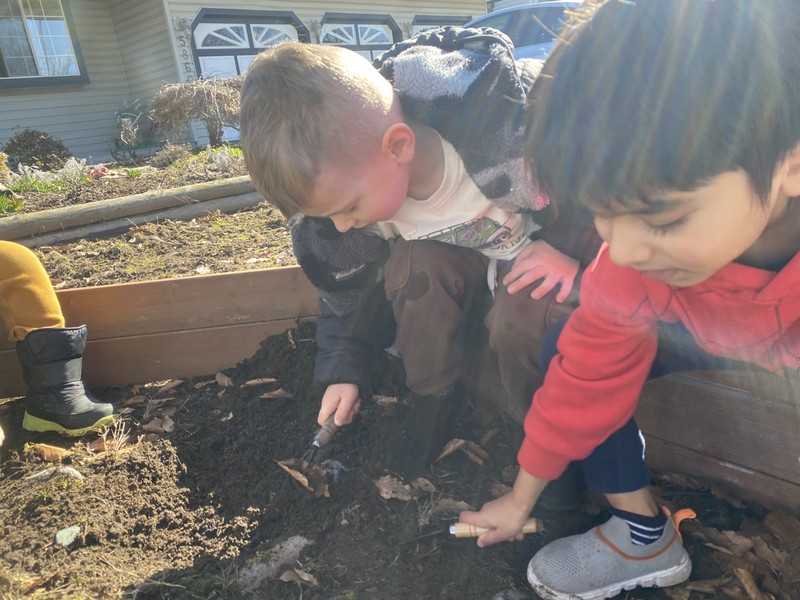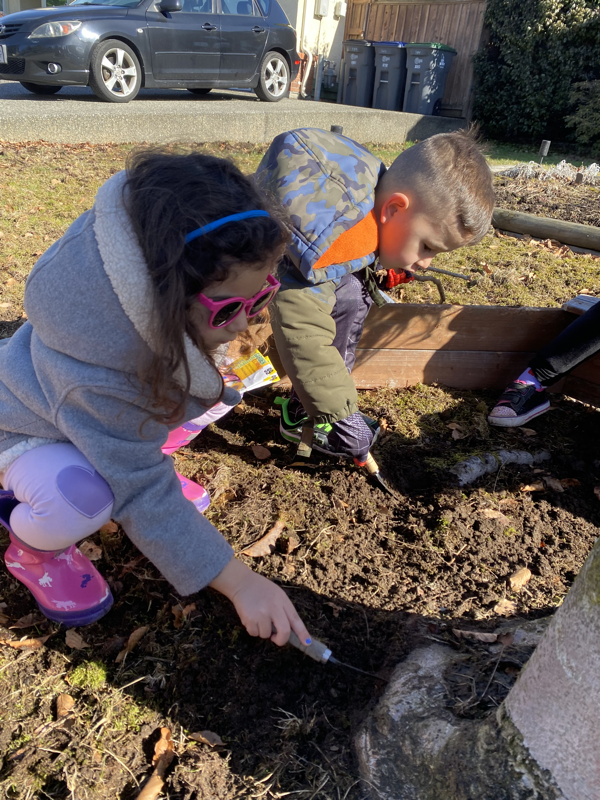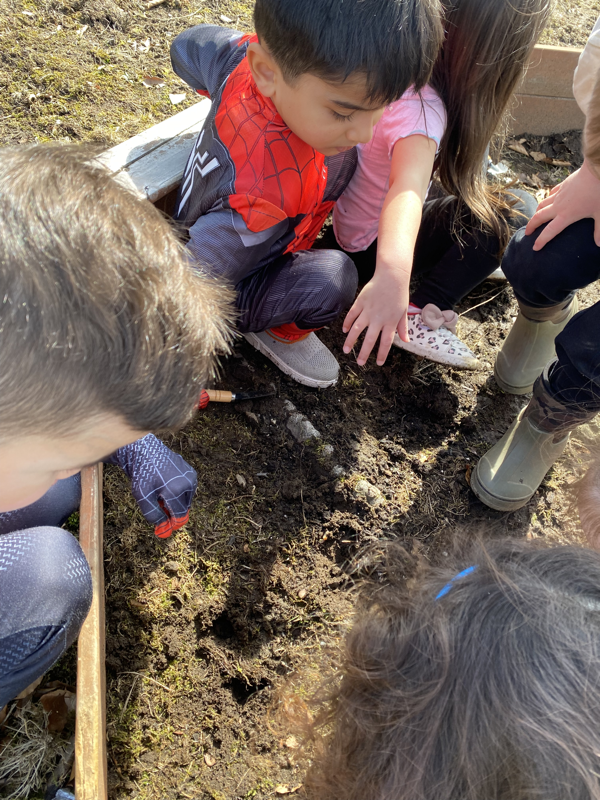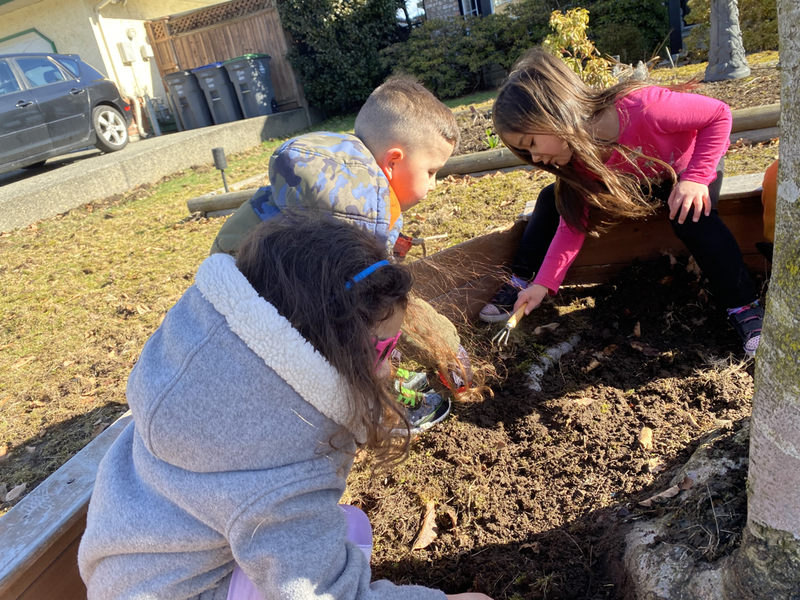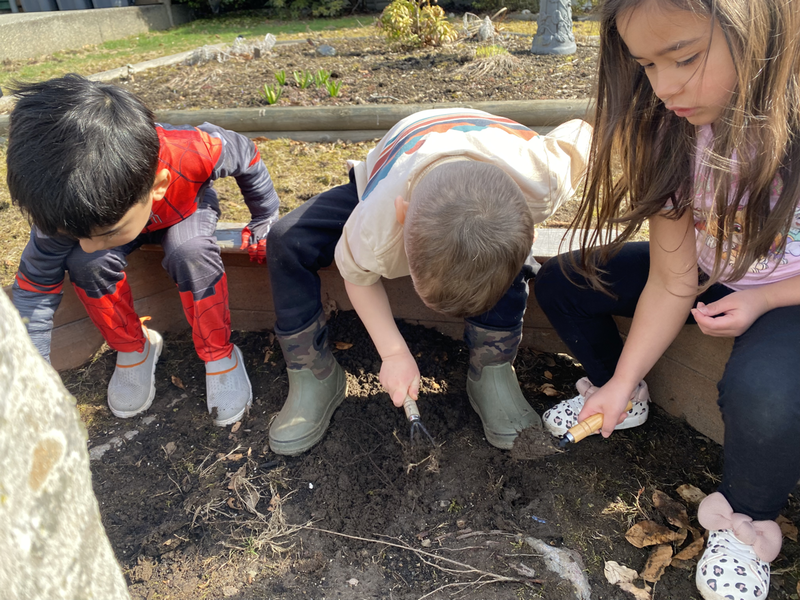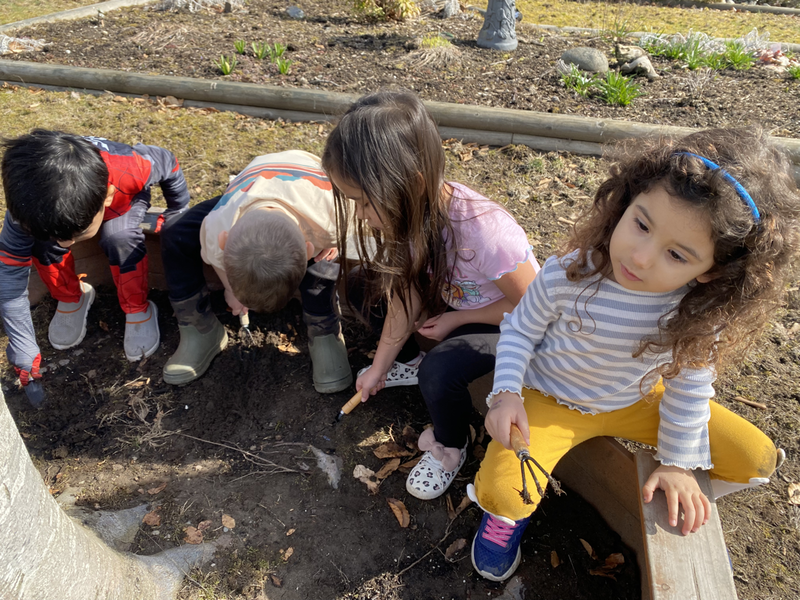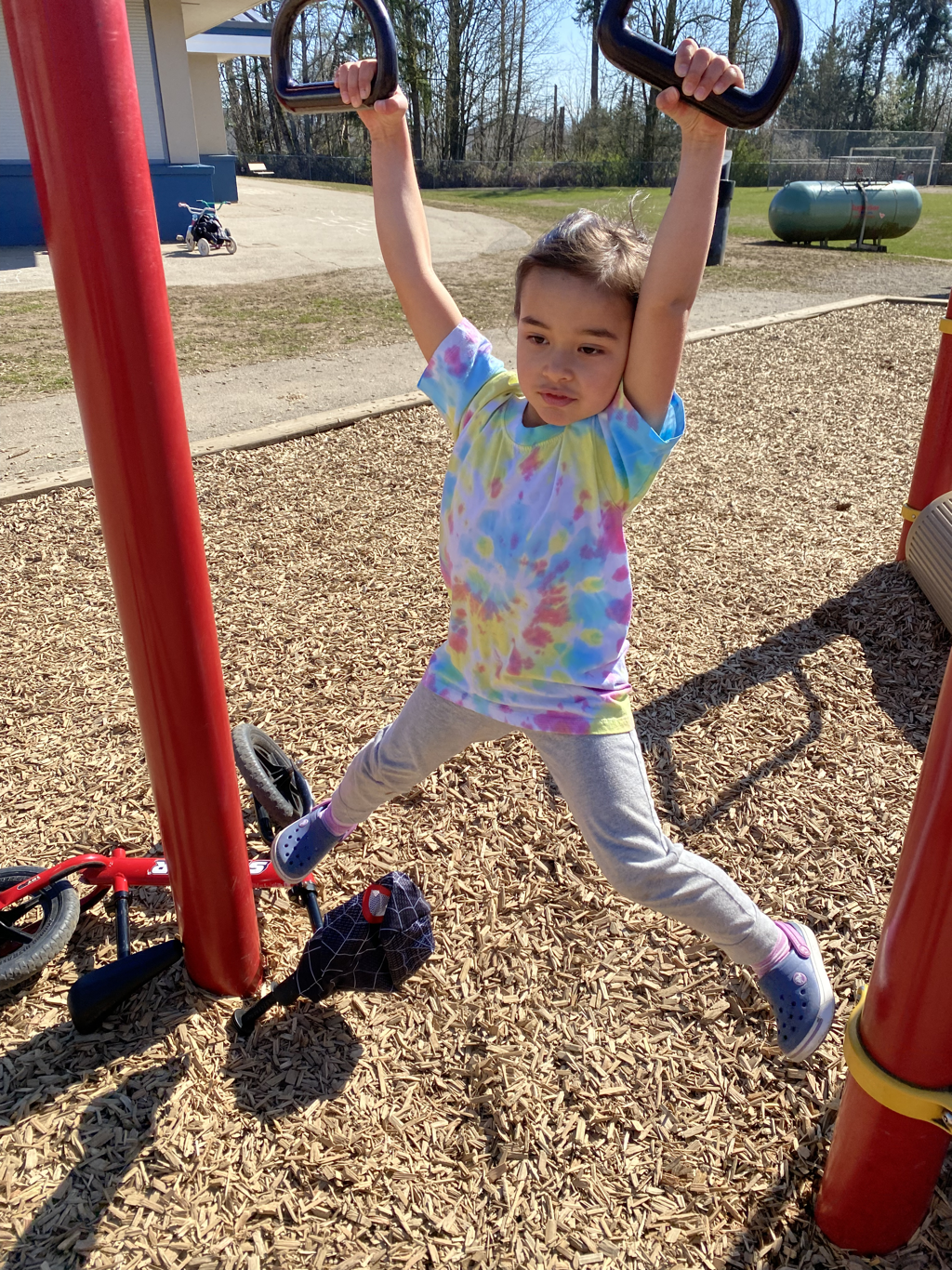|
Yay! Spring has finally arrived. And the temperature is slowly rising. This warmer weather allows us explore outdoors actively. After a long waiting there is nothing more exciting than spotting the first signs of spring! We start visiting our garden bed to dig and push seeds into the soil. We discuss which seeds we would like to plant and here are some of the followings - Vegetables: lettuces, cauliflowers, cucumbers Herbs: basil, sage Flowers: sweet williams, forget-me-not Nothing is better than watching the little sprouts develop into full-sized plants and hopefully, veggies we can eat! Spring is the perfect time to explore and discover the beauty of outdoors. Research has established that active play plays an essential role in our physical and psychosocial health. It has been shown to promote cognitive and early math that have been linked to the types of fine motor and perceptual that are typically developed through active play. Nora takes pleasure while building her confidence concurrently when she climbs up the circular ladder. Neuroscience research has shown that emotion and cognition - feeling and thinking - work together. As her confidence builds up, after a few times of experiencing with guidance, Nora is observed to independently make smooth movements at appropriate speeds. Our abilities develop more and faster during movement play, when all these skills are used at the same time. When our hands are holding onto the handlebars for sure we are making an estimation how strong our grips are supposed to be to make our body swing. Margo indeed develops her momentum to keep her core support her motion in this way. On the other hand, Emily is observed to build-up her ability to assess risk while navigating her way up. For example, her hands and arms are challenged, through grasping and reaching, when she ensures the coordination of her next step in a climb synchronizes. Brooks finds joy in using and mastering the complex body dynamics of movement play. Some thinking skills that mature through movement play include understanding, categorizing, and evaluating. In venues like playgrounds, we are innately motivated to move and socialize. While we run, swing, and laugh with other friends we are simultaneously developing our physical-motor understanding how fast we can run or how fast we can jump, for instance. Research suggests that promoting movement and learning experiences in children can help increase memory, perception, language, attention, emotion, and even decision-making. These abilities, focus and attention, are certainly required to working with push pins into the boards to form shapes with the support of elastic bands. With more conversations, built-up and acknowledged from within, we carefully walk our journeys into comprehending and connecting respect to our body, mind, and soul. We are putting effortful attempts, in knowing this beautiful word in a deeper sense, not just on the surface. We unpack layer by layer through our daily conversation and experiences. When we encounter opportunities to dig deeper, we make intentional pauses, just to make sure we do not miss some opportune time. We acknowledge how an emerging situation arises when a friend mentions, respect can be in silence. It is so very true! We come up with some questions to ourselves:
Kindest,
Children & Friends.
0 Comments
Leave a Reply. |
No part of this publication may be reproduced, distributed, or transmitted in any form or by any means, including photocopying, recording or any other electronic or mechanical methods, without the prior written permission of the publisher.
Archives
July 2024
|
